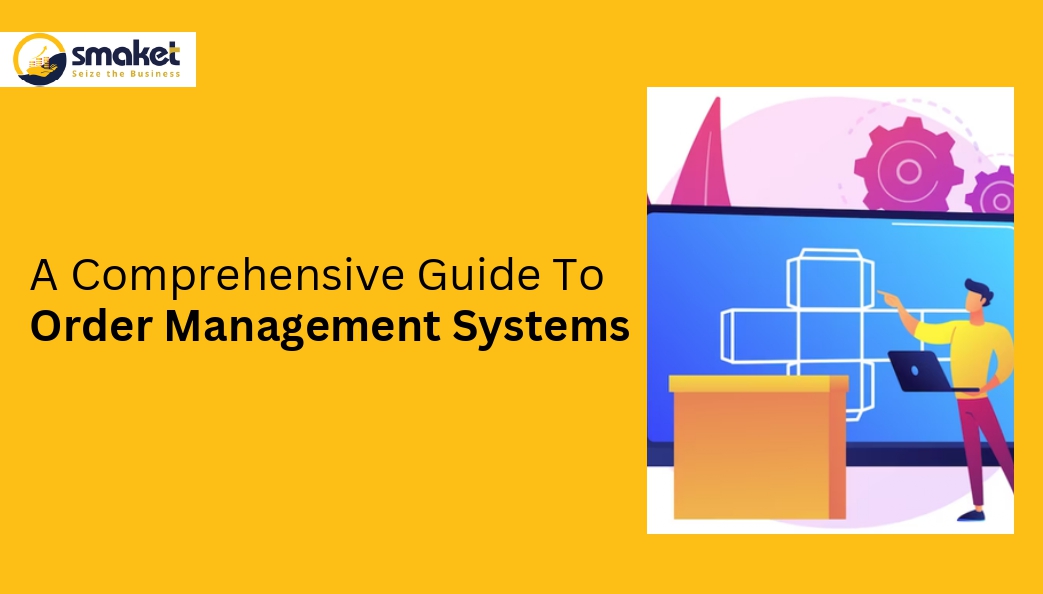preface In moment’s digital period, order operation systems( OMS) play a pivotal part in handling the lifecycle of orders and streamlining business operations. This blog aims to give a comprehensive companion to understanding order operation systems, their significance, factors, and the introductory way involved in the order operation process. With a focus on simplicity and effectiveness, this companion will help businesses optimize their order operation practices.
The Significance of Order Management Systems:
An order operation system serves as a centralized platform for managing client orders, furnishing visibility and control over the entire order lifecycle. It eliminates the need for homemade processes, enhances effectiveness, and improves client satisfaction. By replacing traditional styles, similar as tracking orders through spreadsheets or dispatch, an OMS ensures accurate and timely order fulfillment.
Benefits of Implementing an Order Management System:
Error Reduction:
Error Reduction An OMS minimizes miscalculations in order fulfillment, including address crimes and shipping detainments, enhancing client satisfaction and conserving business character.
Inventory Management:
Inventory Management OMS helps track force situations, precluding understocking and overstocking, which can lead to delayed deliveries or fiscal strain.
Time Savings:
Time Savings By automating order fulfillment tasks, an OMS saves precious time and coffers, allowing businesses to concentrate on core operations and growth.
Components of an Order Management System:
Order Fulfillment:
Order Fulfillment An OMS optimizes the order unity process, icing effective order fulfillment, cost minimization, and offering colorful delivery options to guests.
Enterprise Inventory Visibility:
Enterprise force Visibility OMS serves as a dependable source of force information, consolidating data from multiple systems and furnishing real- time visibility across the association.
Customer Service:
client Service OMS enables effective operation of changes to being orders, similar as price adaptations, duty computations, and force allocation, icing client satisfaction and order delicacy.
Order Aggregation:
Order Aggregation An OMS centralizes order details from colorful channels, furnishing a comprehensive view of client purchase data and easing effective order processing.
Basic Steps of the Order Management Process:
Order Placement:
Order Placement client places an order, and applicable details are recorded and transferred to the storehouse for processing.force Check storehouse director verifies force vacuity and places orders with merchandisers if necessary
Accounts and Invoicing:
Accounts and Invoicing Orders are recorded in the account department, checks are generated, and payments are reused.
Order Fulfillment:
Order Fulfillment Goods are packed to guests using company coffers or third- party shipping services.
Conclusion:
enforcing an order operation system is essential for businesses to streamline their operations, enhance client satisfaction, and ameliorate effectiveness. By using the capabilities of an OMS, associations can automate processes, reduce crimes, optimize force, and deliver a flawless client experience. Embracing a comprehensive order operation system is the key to successfully navigating the complications of ultramodern business deals.
FAQ:
1. What’s the part of a distributed order operation( DOM) system within an order operation system?
A distributed order operation( DOM) system is a pivotal element of an OMS. It intelligently routes orders to the most suitable coffers or destinations for effective order fulfillment. DOM ensures flawless client gests across colorful channels and optimizes order- related business operations.
2. How do I choose the right order operation system for my business?
When opting an order operation system, it’s important to estimate your being processes and identify the conditioning involved at each step. Understanding your specific business requirements will help you produce a list of functionalities needed. Consider factors similar as scalability, integration capabilities, reporting and analytics, and stoner- benevolence when choosing an OMS that aligns with your conditions.
3. Can an order operation system integrate with other software systems in my association?
Yes, utmost ultramodern order operation systems offer integration capabilities with colorful software systems generally used in associations. This includes enterprise resource planning( ERP) systems, storehouse operation systems( WMS), client relationship operation( CRM) software, and more. Integration enables flawless data inflow, enhances visibility, and improves overall functional effectiveness.
4. How does an order operation system contribute to client satisfaction?
An order operation system plays a vital part in icing client satisfaction. By automating order processes, reducing crimes, and furnishing real- time visibility into order status, an OMS improves order delicacy and delivery times. It also enables effective communication with guests regarding their orders, performing in a positive and satisfactory buying experience.
5. Can an order operation system handle complex pricing and elevations for my business?
Yes, an order operation system is able of managing complex pricing and elevations. It can accommodate colorful pricing strategies, abatements, and promotional offers grounded on client parts, order volumes, or specific time ages. This inflexibility ensures accurate pricing computations, applies applicable elevations, and helps maximize deals while maintaining profitability.

